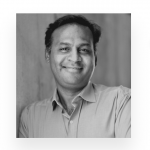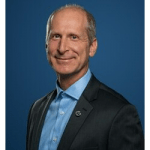Quantum News Briefs September 16: D-Wave demonstrates large-scale coherent quantum annealing, Engineering applications needed to harness quantum technologies open up technological opportunities, MA taking quantum tech from theory to business & MORE

Quantum News Briefs today opens with D-wave’s announcement of a milestone study detailing the first large-scale demonstration of coherent quantum annealing followed by an article “Engineering applications needed to harness quantum technologies open up technological opportunities”. Third is a look at how the state of MA is funding and building the infrastructure to take quantum tech from theory to business. And MORE.
*****
D-Wave demonstrates large-scale coherent quantum annealing
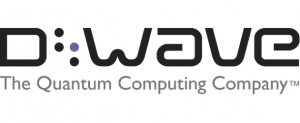 D-Wave Quantum Inc. (NYSE: QBTS) has published a peer-reviewed milestone study of the first large-scale demonstration of coherent quantum annealing. Quantum Briefs News summarizes a news announcement about the study below.
D-Wave Quantum Inc. (NYSE: QBTS) has published a peer-reviewed milestone study of the first large-scale demonstration of coherent quantum annealing. Quantum Briefs News summarizes a news announcement about the study below.
The research exhibits, for the first time, dynamics of a quantum phase transition in a large-scale programmable quantum annealing processor using up to 2000 qubits in a D-Wave processor. This demonstration goes beyond the scale of any previous programmable quantum phase transition, opening the door to simulations of exotic phases of matter (unusual states of matter, outside of liquid, solid or gas, that make up the universe) that would otherwise be intractable.
The paper—a collaboration between scientists from D-Wave, the University of Southern California, the Tokyo Institute of Technology, and Saitama Medical University—entitled “Coherent quantum annealing in a programmable 2000-qubit Ising chain,” was published in the peer-reviewed journal Nature Physics today and is available here. The study shows that the fully programmable D-Wave quantum processor can be used as an accurate simulator of coherent quantum dynamics at large scales. This was demonstrated showing the patterns of “kinks” separating correlated spins in almost perfect agreement with exact analytical solutions of the famous Schrodinger equation for an ideal quantum system, completely isolated from outside noise. The density and spacing of kinks depend on, among other things, the speed and “quantumness” of the experiment. Measurements of single-qubit parameters were shown to accurately predict the behavior of systems from 8 to 2000 qubits, demonstrating high levels of control in quantum simulations at all scales.
The significance of this achievement goes beyond the basic scientific aspect of understanding quantum phase transitions in one-dimensional matter. By establishing the technical basis for large-scale quantum simulations, it has paved the way for scientifically understanding the properties of a wider range of quantum materials.
Further, the scientific achievements presented in Nature Physics underpin D-Wave’s ongoing commitment to relentless scientific innovation and product delivery.
*****
Engineering applications needed to harness quantum technologies open up technological opportunities
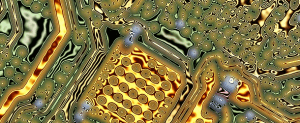 The transition of the quantum mechanics realm into engineering applications is opening up a large number of disruptive quantum technological opportunities. Quantum News Briefs summarizes a recent article by in Semiconductor Engineering by Kay-Uwe Giering and Andy Heinig who explain the opportunities.
The transition of the quantum mechanics realm into engineering applications is opening up a large number of disruptive quantum technological opportunities. Quantum News Briefs summarizes a recent article by in Semiconductor Engineering by Kay-Uwe Giering and Andy Heinig who explain the opportunities.
Microelectronics plays a crucial role in harnessing quantum technologies as future key technologies. On the one hand, semiconductor processes are an important part of creating quantum technological systems. Above all, however, high-performance electronic chips are needed to control the quantum setups and process the resulting extensive measurement data. Microelectronics thus provides the interface from quantum systems to the outside world. In addition to the performance requirements, some applications require that the systems are cooled to extremely low temperatures. This results in additional requirements for the mechanical structure and for the electrical design of the circuits.
Compared to other applications, the quantities will not be particularly large even if quantum applications reach a commercial breakthrough point. On the other hand, many quantum applications often require highly customized circuits, for example, in terms of the voltage levels they need to process or provide. Furthermore, the data processing requirements are sometimes extremely high, so that only the most modern circuit concepts and circuits can meet them. Often, the electronics must also be fit in the smallest possible installation space, either due to the requirements of the application or because it is located in a cryostatic domain. Therefore, novel design concepts such as chiplets are expected to meet these requirements.
*****
Massachusetts taking quantum tech from theory to business
 Massachusetts is building a foundation for a quantum technology economy. Quantum News Briefs shares several of the quantum tech projects being funded in the state.
Massachusetts is building a foundation for a quantum technology economy. Quantum News Briefs shares several of the quantum tech projects being funded in the state.
A $3.5 million grant from the Massachusetts Housing and Economic Development will help Northeastern University establish the Experiential Quantum Advancement Laboratories (EQUAL) at its Innovation Campus in Burlington. The grant, part of the Collaborative Research & Development Matching Grant Program and administered by the Innovation Institute at the Massachusetts Technology Collaborative (MassTech), will support the nearly $10 million project.
The funding will strengthen EQUAL’s partnerships with the state, nine academic institutions and 23 industry partners as they work to streamline the research-to-commercialization pipeline for quantum technologies.
At EQUAL’s Building V laboratory, students and researchers will be able to apply new quantum technologies at the commercial level right away.
In April, the commonwealth announced funding for a smaller quantum collaborative between the research centers at the University of Massachusetts at Boston, Western New England University and three Massachusetts-based small businesses. The effort aims to boost the development and commercialization of quantum computing hardware and support workforce development for the quantum information industry.
*****
Quantum battery breakthrough paves way toward 90 second recharge of vehicle
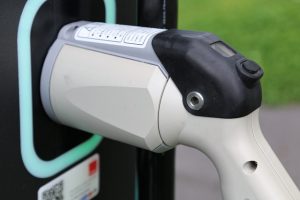 Quantum batteries use the same bizarre properties of quantum mechanics that make next-generation quantum computers possible, though instead of vastly increasing the processing power of computers they could enable instant recharging of a vehicle in just 90 seconds, according to a recent article by Anthony Cuthbertson in the Independent. Quantum News Briefs summarizes below.
Quantum batteries use the same bizarre properties of quantum mechanics that make next-generation quantum computers possible, though instead of vastly increasing the processing power of computers they could enable instant recharging of a vehicle in just 90 seconds, according to a recent article by Anthony Cuthbertson in the Independent. Quantum News Briefs summarizes below.
A team comprised of scientists from the Institute of Basic Science in Korea and the University of Insubria in Italy made the breakthrough towards realzsing this technology by making use of a quantum mechanical system known as the micromaser.
It uses an electromagnetic field to store energy charged through a stream of qubits, while simultaneously protecting against the risk of overcharging.It uses an electromagnetic field to store energy charged through a stream of qubits, while simultaneously protecting against the risk of overcharging. The researchers described a micromaser as “an excellent model of quantum battery”, and successfully demonstrated that the charging process is faster than classical charging.
The South Korean researchers have already calculated that quantum battery technology could reduce the home charging times of electric cars from 10 hours to just three minutes, while supercharger stations could fully recharge a vehicle in just 90 seconds. In a study published earlier this year, the scientists noted how a quantum battery’s charging time actually decreases as the battery’s size gets bigger. This is due to a phenomenon known as quantum speedup, which relates to the way the molecules become more entangled as the battery gets bigger.
*****
Sandra K. Helsel, Ph.D. has been researching and reporting on frontier technologies since 1990. She has her Ph.D. from the University of Arizona.






















